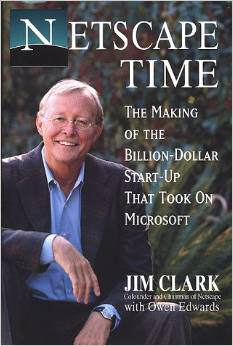What Do Investors Look For in a Startup’s Team?
Every investor is looking for the “dream team” of executives to put his money on – somebody like the next Jim Clark. Often I find that experienced investors flip to the management page of a business plan, even before they read the product description. That’s how important the people are. What are investors looking for in the CEO and the rest of the top executives?
- Been there, done that, and won. This may not seem fair to all you first-time entrepreneurs, but wouldn’t you choose to bet on a horse that has been in races before, and won, rather than an unknown in his first race? The size of the race is also important. Fortune 1,000 CEOs usually don’t make good startup CEOs, and vice-versa.
- Experience and expertise in this business area. You may have great credentials as a public servant in your home town, but that won’t get you money to build a social network on the Internet, or start a software company. You can learn a lot about a new technology from Wikipedia and scouring the Internet, but probably not enough to qualify you as CEO of a new company in that area.
- Network of followers and business associates. Introverts and loners need not apply. Your job as CEO involves heavy doses of selling the merits of your company, lobbying (begging) for money, and convincing other executives to help you or join you.
- Bundles of energy, money, and talent. The startup road is guaranteed to be long and hard. Investors look for someone who is able and willing to put “skin in the game”, looks and sounds like he can weather the storm, will always see the bright side despite adversity, and never gives up.
- Able to communicate a vision. To be respected at the top of the pyramid, a CEO must be able to clearly communicate the vision of the company to inspire investors, the team, and customers. Of course, before you can communicate a vision, you have to have one.
- Relentlessly resourceful. Not merely relentless and passionate about your journey, but able to overcome novel difficulties (per Paul Graham). Being relentlessly resourceful is definitely not what you learn in big companies, or in most schools.
- “The buck stops here.” The CEO has to be confident and clearly the final decision maker. Investors don’t like “equal partner” situations, or worse yet, family pairs in top positions. The CEO is expected to make the presentations to investors, and answer questions decisively.
What if you can’t convince Jim Clark (Silicon Graphics, Netscape, WebMD, MyCFO, Juniper Networks) to run your startup? The most common solution is that you “bootstrap” your business, or fund it yourself, at least to the point that your “traction” is evident (you have a product, you have customers, you have revenue). Another alternative is to rely on that famous first tier of investors, called friends, family, and fools.
Everyone loves that dark horse who comes from the rear to lead the pack and win the race, but very few people will bet on him up front. But don’t let that discourage you. Even Jim Clark started as just another associate professor of electrical engineering, but he teamed with some bright people, and proved he could beat the odds.
If you don’t have the credentials today, team with someone who does. The strength of your idea alone won’t suffice to bridge the funding gap. There is no substitute for experience and mentoring. The quicker you get it, the sooner you can be the next Jim Clark and write your own check.

